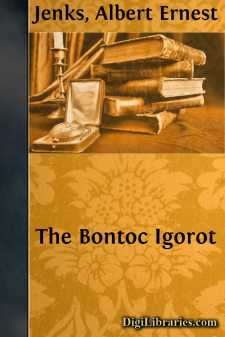Categories
- Antiques & Collectibles 13
- Architecture 36
- Art 48
- Bibles 22
- Biography & Autobiography 813
- Body, Mind & Spirit 142
- Business & Economics 28
- Children's Books 17
- Children's Fiction 14
- Computers 4
- Cooking 94
- Crafts & Hobbies 4
- Drama 346
- Education 46
- Family & Relationships 57
- Fiction 11829
- Games 19
- Gardening 17
- Health & Fitness 34
- History 1377
- House & Home 1
- Humor 147
- Juvenile Fiction 1873
- Juvenile Nonfiction 202
- Language Arts & Disciplines 88
- Law 16
- Literary Collections 686
- Literary Criticism 179
- Mathematics 13
- Medical 41
- Music 40
- Nature 179
- Non-Classifiable 1768
- Performing Arts 7
- Periodicals 1453
- Philosophy 64
- Photography 2
- Poetry 896
- Political Science 203
- Psychology 42
- Reference 154
- Religion 513
- Science 126
- Self-Help 84
- Social Science 81
- Sports & Recreation 34
- Study Aids 3
- Technology & Engineering 59
- Transportation 23
- Travel 463
- True Crime 29
The Bontoc Igorot
Categories:
Description:
Excerpt
Preface
After an expedition of two months in September, October, and November, 1902, among the people of northern Luzon it was decided that the Igorot of Bontoc pueblo, in the Province of Lepanto-Bontoc, are as typical of the primitive mountain agriculturist of Luzon as any group visited, and that ethnologic investigations directed from Bontoc pueblo would enable the investigator to show the culture of the primitive mountaineer of Luzon as well as or better than investigations centered elsewhere.
Accompanied by Mrs. Jenks, the writer took up residence in Bontoc pueblo the 1st of January, 1903, and remained five months. The following data were gathered during that Bontoc residence, the previous expedition of two months, and a residence of about six weeks among the Benguet Igorot.
The accompanying illustrations are mainly from photographs. Some of them were taken in April, 1903, by Hon. Dean C. Worcester, Secretary of the Interior; others are the work of Mr. Charles Martin, Government photographer, and were taken in January, 1903; the others were made by the writer to supplement those taken by Mr. Martin, whose time was limited in the area. Credit for each photograph is given with the halftone as it appears.
I wish to express my gratitude for the many favors of the only other Americans living in Bontoc Province during my stay there, namely, Lieutenant-Governor Truman K. Hunt, M.D.; Constabulary Lieutenant (now Captain) Elmer A. Eckman; and Mr. William F. Smith, American teacher.
In the following pages native words have their syllabic divisions shown by hyphens and their accented syllables and vowels marked in the various sections wherein the words are considered technically for the first time, and also in the vocabulary in
. In all other places they are unmarked. A later study of the language may show that errors have been made in writing sentences, since it was not always possible to get a consistent answer to the question as to what part of a sentence constitutesPage 14a single word, and time was too limited for any extensive language study. The following alphabet has been used in writing native words.- a as in far; Spanish ramo
- â as in law; as o in French or
- ay as ai in aisle; Spanish hay
- ao as ou in out; as au in Spanish auto
- b as in bad; Spanish bajar
- ch as in check; Spanish chico
- d as in dog; Spanish dar
- e as in they; Spanish hallé
- Ã⢠as in then; Spanish comen
- f as in fight; Spanish firmar
- g as in go; Spanish gozar
- h as in he; Tagalog bahay
- i as in pique; Spanish hijo
- Ã as in pick
- k as in keen
- l as in lamb; Spanish lente
- m as in man; Spanish menos
- n as in now; Spanish jabon
- ng as in finger; Spanish lengua
- o as in note; Spanish nosotros
- oi as in boil
- p as in poor; Spanish pero
- q as ch in German ich
- s as in sauce; Spanish sordo
- sh as in shall; as ch in French charmer
- t as in touch; Spanish tomar
- u as in rule; Spanish uno
- û as in but
- ü as in German kühl
- v as in valve; Spanish volver
- w as in will; nearly as ou in French oui
- y as in you; Spanish ya
It seems not improper to say a word here regarding some of my commonest impressions of the Bontoc Igorot....


